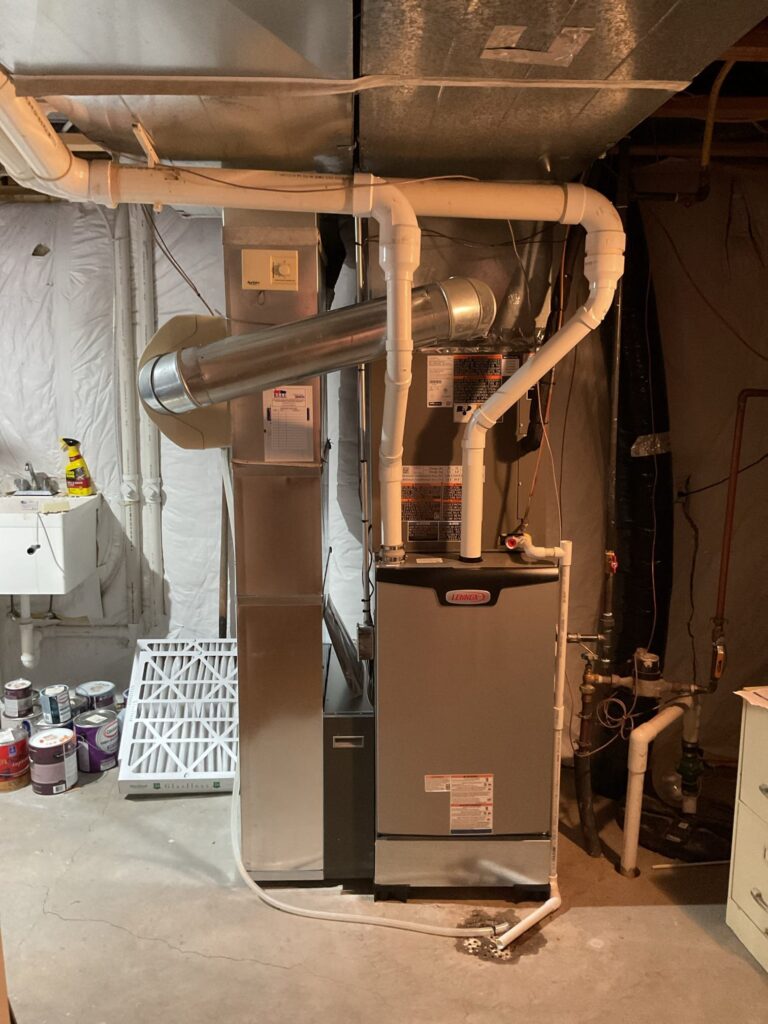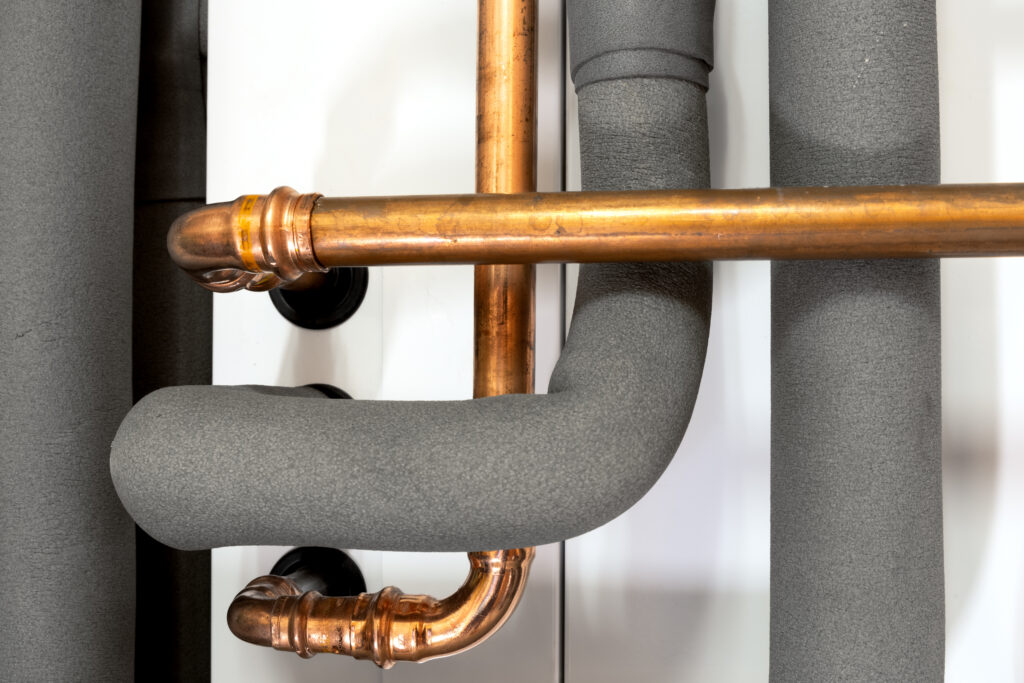

Blog
Improve Indoor Air Quality at Home: The Essential Guide

Air pollution is everywhere, generated by everything from cars to outdoor power plants. But, did you know the air inside your home can be just as bad – and potentially even worse – than the air outside? The EPA estimates that the air inside a home is up to five times more polluted than outside air, so it’s critical to pay attention to the indoor air quality.
Improving air quality inside your home begins with acquiring basic knowledge of IAQ and how it can affect your health and then finding solutions you can use to positively impact air quality right away.
How Does Indoor Air Get Polluted?
While you may think of your home as your safe zone from air pollution, the air you breathe may not be healthy. The primary cause of IAQ issues is indoor pollution, including allergens like dirt, dust mites, mold, mold spores, pollen and pet hair and dander that release gas or particles into the air. The National Institutes of Health estimates that over 90% of homes have three or more detectable allergens, and 73% have at least one allergen at elevated levels.
Inadequate ventilation can increase indoor pollutant issues because the amount of outdoor air is insufficient to dilute indoor sources. Other common indoor sources that can cause pollution include:
- Oil, gas, kerosene and tobacco products
- Cleaning supplies, paint, insecticides and other commonly used household products
- Wood- or coal-heating and cooking appliances, fireplaces
- Building materials that may contain asbestos, lead or other chemicals from pressed wood products
The air outside can also contribute to poor indoor air quality. It can enter through open doors or windows, ventilation systems and cracks in structures, walls, floors or ceilings. Radon is just one example of a pollutant that can seep into your home through cracks, construction joints or gaps in foundations around pipes, wires and pumps. In addition, when people enter your home, they inadvertently bring in soil or dust on their shoes and clothing from outdoors, along with pesticides and ozone. Removing your shoes upon entry is a good practice to help reduce the spread of pollutants in your home.
Several other factors can affect IAQ, including how well your home is sealed, air exchange rate, outdoor climate, weather conditions and whether you operate air conditioners, humidifiers, furnaces or space heaters.
How Can IAQ Affect Your Health?
Poor indoor air quality can have both immediate and long-term effects on your health and that of others living in your household, especially the young, elderly or chronically ill. Direct health issues caused by indoor air pollutants may appear shortly after a single exposure or later after repeated exposure. If you’ve ruled out allergies or other medical conditions, it may be worth considering your air quality. Things to look for include:
- Irritation of the eyes, nose and throat
- Headaches
- Dizziness
- Fatigue
More severe and long-term health effects, such as respiratory issues, heart disease or even cancer, can show up years after exposure or after repeated periods of exposure.
If you have any symptoms or suspect you have a problem with IAQ, air quality services are available to help identify IAQ issues. These home air quality inspections can test for mold, radon and other volatile organic compounds that may contribute to health problems.
What Solutions Are Out There for Improving IAQ in Your Home?
Now that you know more about indoor air pollutants and how they can impact your air quality, it’s time to act. In addition to keeping doors and windows closed when outdoor air quality levels are poor and keeping your home clean, various options are available to help improve IAQ.
Furnace Filters and Air Cleaners
When was the last time you changed your furnace filter? An affordable way to improve indoor air quality is to change your filter regularly to help reduce dirt, dust, mold and pollen in your home. The type of furnace filter your system uses will determine how frequently it needs to be changed.
A standard 1- to 3-inch disposable filter should be changed at least once per month. Pleated filters, on the other hand, have more surface area and tend to plug up faster. These should be changed twice a month.
High-efficiency particulate air (HEPA) filters are recommended by the U.S. Department of Health and can remove at least 99.97% of airborne allergens and pollutants. These filters can be replaced about once every six months.
UV filters use short-wave ultraviolet light to kill bacteria and viruses as they pass through the HVAC unit. Most manufacturers recommend changing this type of filter every 12 months.
A high-quality air cleaner will work with the filter in your current heating and cooling system to collect indoor pollutants. For example, the Dynamic Air Cleaner can remove up to 95% of the particles in the air. Once in place, it forms an electronic polarized-filter field that captures airborne particles as the air passes through.
Air Purifiers
A great way to improve air quality at home is by using an air purification system, like the iWave-R or Aerus Air Scrubber. Air purifiers clean and sanitize the air and are designed to reduce mold, bacteria, and viruses, as well as pet dander, odors, air pollutants and smoke. Air purification accessories also mount inside the air duct and use naturally occurring peroxides to kill viruses and bacteria in the airstream.
Duct Cleaning
Air ducts collect dirt, pollen, allergens and pet hair and dander. As a result, mold spores, bacteria, fungus and mildew can grow and circulate in the air. If your home is excessively dusty or more than 10 years old, or if you’ve done significant renovations to your home, look into an air duct cleaning service. A proper duct cleaning will last five years. The service cost should be determined by the size of your home, the number of ducts and their configuration.
Humidifiers/Dehumidifiers
If you are experiencing IAQ issues in your home, a humidifier or dehumidifier can help. A humidifier can ensure that the air inside your home isn’t too dry in the winter, which can cause you to have itchy, dry skin, chapped lips or nose bleeds. A lack of humidity can also produce static electricity or split hardwood floors, causing indoor discomfort. A dehumidifier is a good idea in the summer to help take the moisture out so the air inside your home is not sticky, muggy or uncomfortable.
You likely spend a good portion of your day indoors, so keeping the air in your home clean is essential to your health and well-being. If you think your home has poor air quality, first get your air quality assessed. Then, reach out to our team of experts to request an estimate for air purifiers, humidification systems or duct cleaning services to help improve IAQ inside your home.








